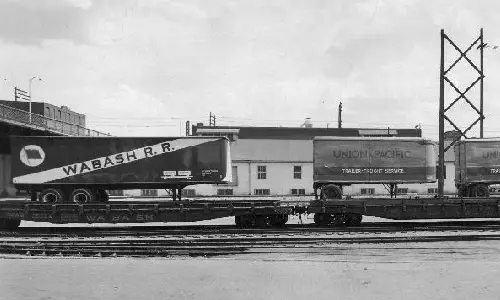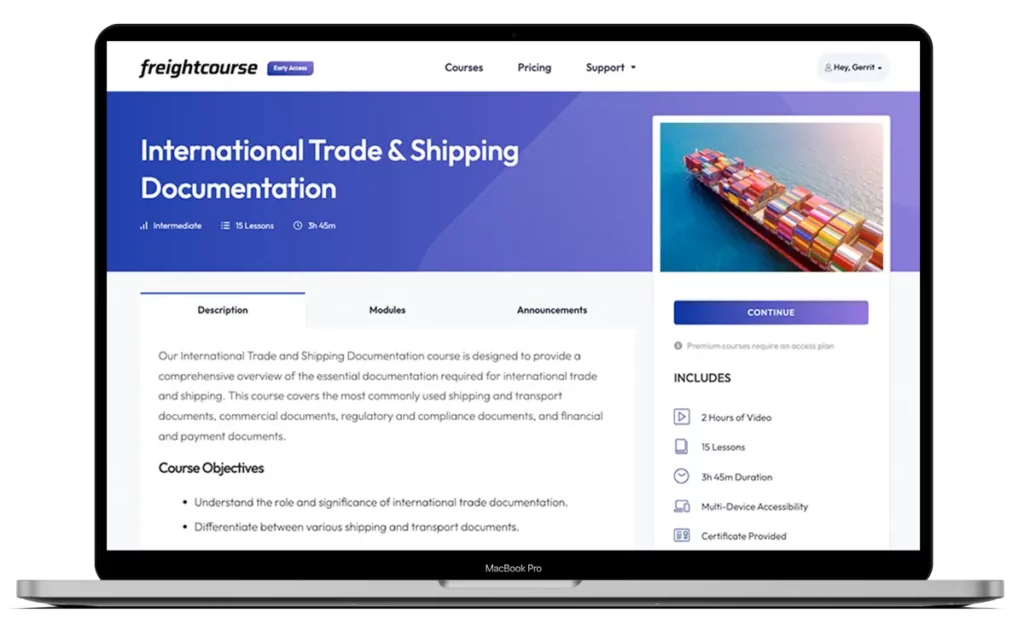Rail freight has been a popular means to transport goods across countries ever since the first steam trains were invented in the early 1800s. To date, they remain a viable means of transport and are also often used for intermodal shipments, such as a Trailer on Flatcar.
Trailer on Flatcar (TOFC), also known as ‘piggyback’, is when a trailer together with its container are loaded onto a flatcar train. Having shipments move on rail freight via Trailer on Flatcar arrangements can significantly shorten transportation lead times and save costs.
There are also other benefits Trailers on Flatcars have, when compared to reloading cargo onto cargo wagons or trucking the shipment via road freight. This and more, will be explored in this article.
What Are the Benefits of Using Trailer on Flatcars (TOFC)?
Loading a trailer on a train’s flatcar has several advantages. Not only can it save a lot of time compared to unloading and reloading containers but it is also deemed to be more reliable and convenient compared to direct trucking.
- Faster Operational Turnaround – Without the need to unload and reload containers from trailers onto container wagons, it can be faster to load the entire trailer with the container onto a flatcar.
- Efficient Transportation – Using this service means high utilization of flat cars which in turn means lower costs for customers compared to the use of trucks. The overall transit time vs trucks is also greatly shortened.
- Economies of scale – Transporting huge volumes translates to shorter transit times and lower freight cost compared to individual container trucking. Although it isn’t as efficient as loading containers on well cars which are double-stacked, it’s a viable middle ground.
- Increased Safety – Truck drivers typically have a maximum allowed driving time on roads (In the US it’s 11 hours). Container transport via rail transport is almost guaranteed to be a continuous journey.
- Environmental Friendliness – Less trucks on the road also means less traffic, congestions and potential accidents. As trains are able to transport more trailers and containers, there is also less overall carbon emission.
- Increased Reliability – Trains operate on a schedule. This means that TOFC shipments generally depart on time and arrive one time, without being subject to traffic or unforeseen delays.
How Are Trailers Loaded on Flatcars?
TOFC arrangements are typically done alongside port operations or at a train/cargo depot. Once the containers and the trailers are in the intermodal facility, they are loaded onto the flatcars using port cranes such as a rubber-tired gantry crane (RTG) or reach stackers.
Before the RTG loads the trailer and the container onto the flatcar of the train, the prime mover or cab is disconnected. Upon arrival, another crane lifts the trailer and container from the flatcar, before it’s reconnected to another prime mover for the final container delivery.
What Are TOFC trains?
TOFC trains are trains that are equipped with a large amount of flatcars and are designed to transport cargo over long distances. A TOFC train can transport an average of 100 flat cars and in some scenarios even more.
In the United States, this is mostly seen as part of an intermodal service from West Coast to East Coast ports using the railroad network between states. It’s common to use intermodal transport services of road and rail freight through TOFC trains.
History of Trailers on Flatcars (TOFC)?
Common usage of Trailers on Flatcar trains date back to 1926, when Chicago North Shore & Milwaukee Railroad began handling their cargoes using train flatcars to optimize its own business operations.
During the 1930s TOFC services have expanded and shown significant differences in price and convenience when compared to between inland haulage through road freight.

Between the late 1950s and 1980s, the network was expanded to 42 railroads with an increased usage. Other states have taken notice of how efficient it was loading trailers on flatcars, compared to trucking containers directly.
Today, it remains a common practice in the United States for long distance container transport. Due to height clearance limitations, TOFC arrangements are not common in Europe, except on longer routes between Germany Austria and Italy.
Trailer on Flatcar (TOFC) vs Container on Flatcar (COFC)
In a Trailer on Flatcar configuration, a trailer together with a container is loaded onto a flatcar of a train. On the other hand, in a Container on Flatcar configuration, only the container is loaded onto a flatcar.
The difference between TOFC and COFC is the trailer. There is no trailer being loaded onto a flatcar with COFC. That also means that TOFC cannot accommodate double-stacking,

Get Free Course Access
If you enjoyed the article, don’t miss out on our free supply chain courses that help you stay ahead in your industry.

Gerrit Poel
Co-Founder & Writer
at freightcourse
About the Author
Gerrit is a certified international supply chain management professional with 16 years of industry experience, having worked for one of the largest global freight forwarders.
As the co-founder of freightcourse, he’s committed to his passion for serving as a source of education and information on various supply chain topics.
Follow us